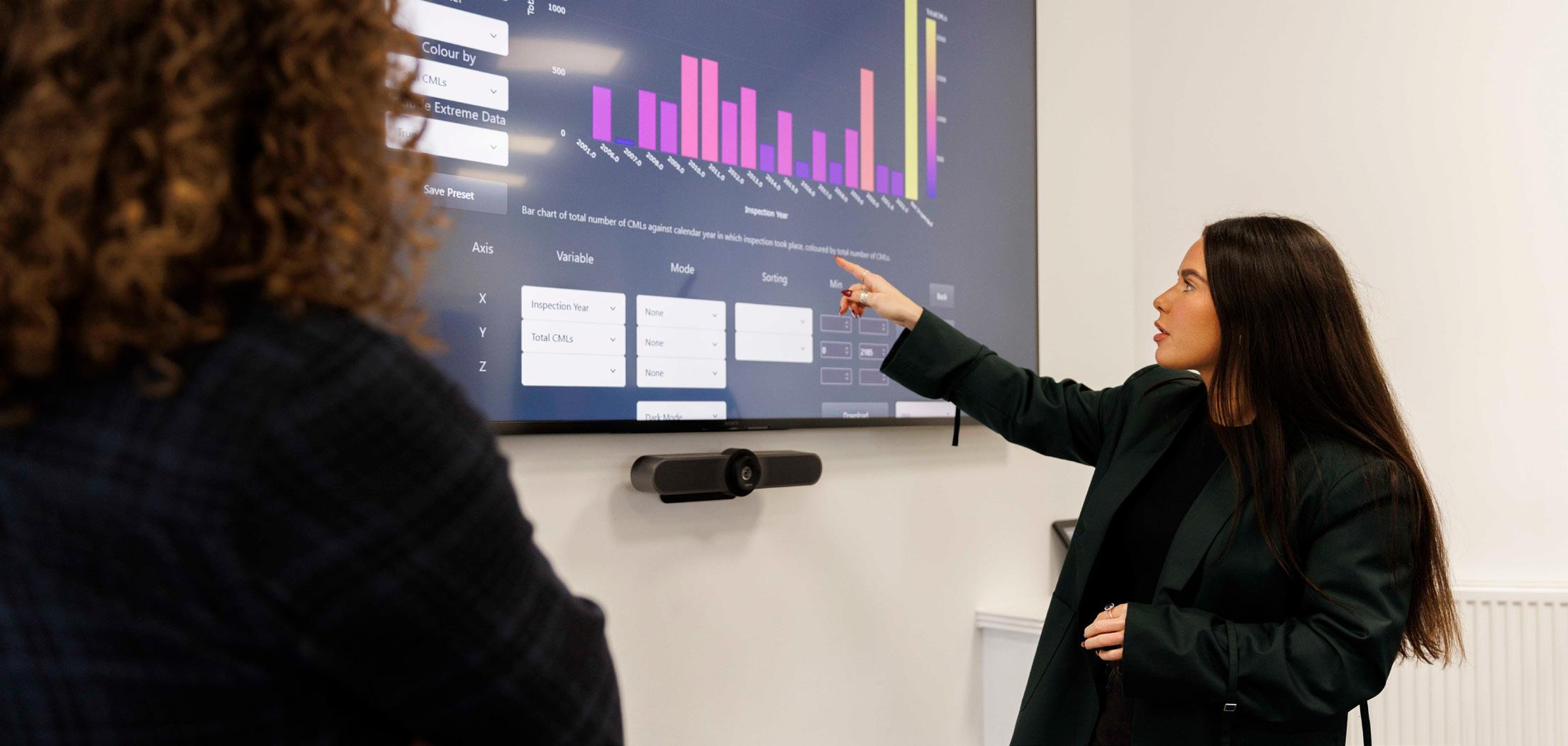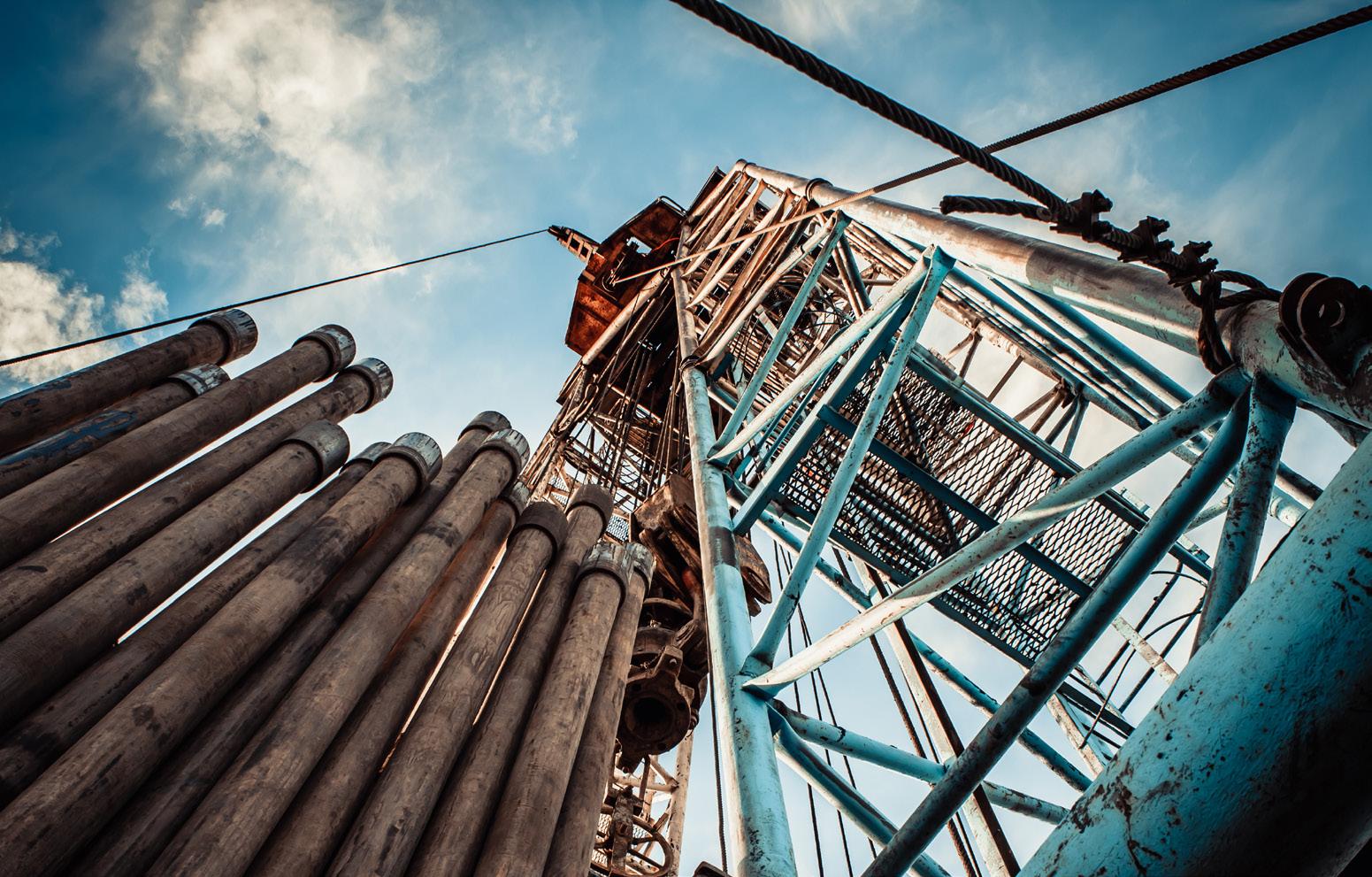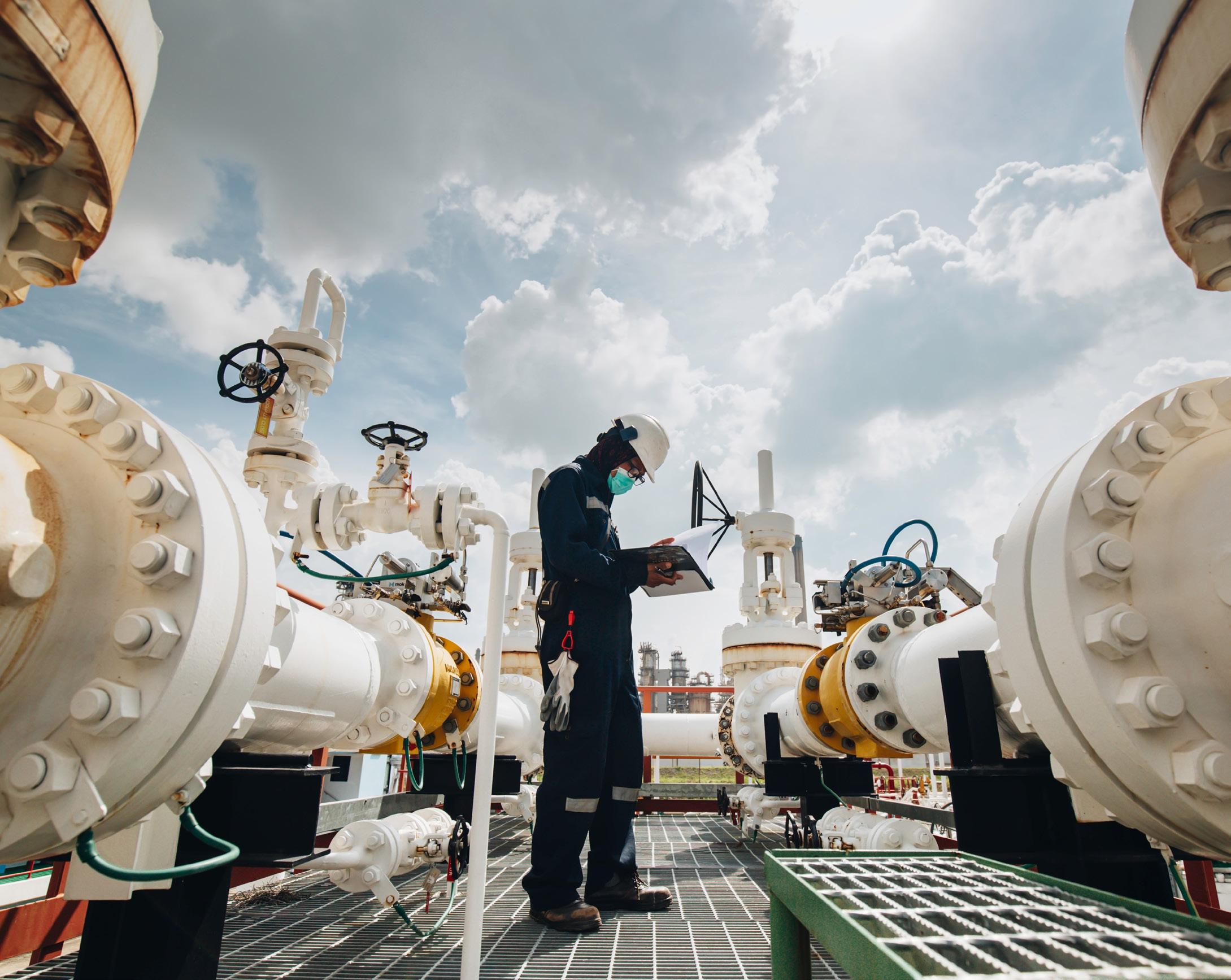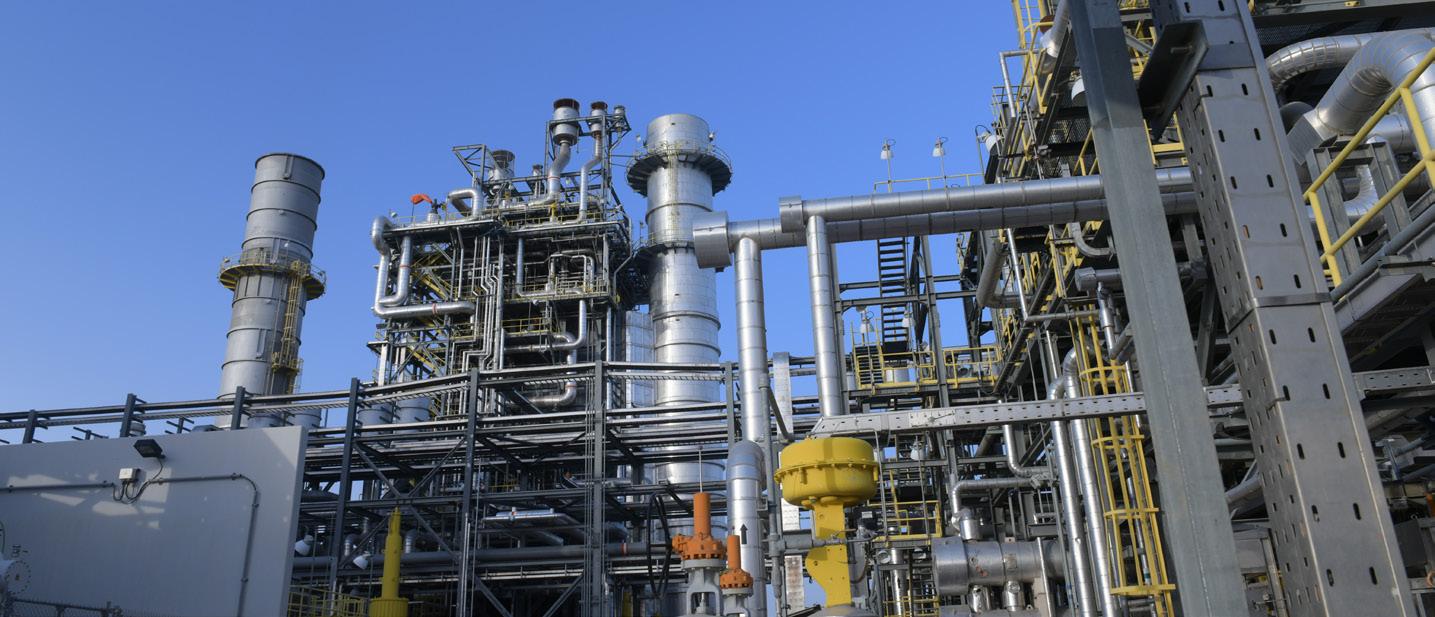
4 minute read
Unlocking offshore asset integrity through innovative technologies
In today’s energy sector, the efficient management and maintenance of offshore assets is more crucial than ever to ensure sustained operations and long-term viability. Essential to achieving this is integrity assessments, which play a pivotal role in ensuring the prolonged and reliable functioning of installations throughout their lifecycle.
Oil and gas platforms in particular, are exposed to harsh environmental conditions and complex challenges, necessitating regular inspections to maintain their integrity and operational efficiency. The goal of these assessments is to minimise the need for disruptive interventions, thereby reducing downtime, costs, and potential safety risks.
The sorting and curation of data is playing an increasingly important role in this activity, providing insights that support more effective maintenance planning for safety-critical equipment, while reducing the requirement for unnecessary inspections. However, there are several hurdles to overcome to gather and extract full value from the available data. This is partly due to the extreme volume of data which can span decades for mature assets, including information from various sources.
The existing approach in large physical asset management revolves around sporadic data collection, periodically analysed by humans. This method results in reactive and lagging decision-making, where the full commercial picture is not always considered. This can lead to operational disruptions and further technical, operational, and logistical complexities if not addressed.
However, these challenges highlight opportunities for change where digitalization is a key player. Advanced data analytics, artificial intelligence, and the Internet of Things (IoT) empower operators to optimize production, predict equipment failures, and streamline maintenance processes. To fully leverage the potential of data, it is imperative for the energy industry to ensure robust data management and integrity.
Understanding your data
Imrandd specialize in industrial data solutions, helping clients in energy and other sectors to make fast and efficient business decisions in line with commercial and environmental, social and governance (ESG) strategies.


The company was recently approached by a North Sea operator to carry out a comprehensive integrity assessment on a floating production storage offloading (FPSO) vessel. The FPSO was undergoing modifications and upgrades to accommodate new field operation conditions and required identification of equipment for replacement, repair, or fabric maintenance. The organisation also requested details for prioritising the order in which they were replaced based on their condition. The aim was to ensure minimal need for offshore intervention from an integrity standpoint to extend the operational life of the field, up to cessation of production (CoP) in 2035.
Imrandd collaborated with a digital asset management specialist to bring combined capabilities across asset scanning, data extraction and data analysis, allowing for large volumes of inspection data to be efficiently obtained, processed, and analysed. The partnership set out to make optimal use of the FPSO’s large dataset which consisted of external asset scans and internal inspection reports.
The partner company’s web-based technology was first utilised for inspection of all pressure systems which included pipework, vessels, heat exchangers, tanks, and filters, in addition to topside structures, hull, and marine elements. The visual inspection tool utilises accurate inspection and engineering data to rapidly detect and quantify defects, providing functionality to facilitate support and manage the integrity management cycle.
Steven Saunders, global head of new business explains how Imrandd then gathered all non-destructive testing (NDT) reports including crucial integrity assessment data which was then sorted, curated and cleansed for further analysis using semi-automated QA/QC processes, before employing its EXTRACT software.
“EXTRACT automatically ingests and gathers data which is essentially inaccessible, and consolidates it into one digestible format, ready for analysis,” he says. “The technology utilises a combination of techniques including Optical Character Recognition (OCR) and computer vision to enable limitless volumes of data to be processed rapidly. With the ability to pull data from multi-format sources and different report types, extraction of large datasets delivers accurate digitized data.
“From the data processed, our proprietary solution obtained 2,976 topside pipework wall thickness readings from over 480 inspection reports from 2017 onwards. This produced considerable time savings, taking a matter of days in comparison to what would have previously taken a team of engineers’ weeks, and ensured that there was a clear picture of the asset’s condition history.”
Prioritised insights
The extracted data was then processed using Imrandd’s EXACT analytical tool which cleanses, corrects and interprets large data sets, then maps and predicts equipment degradation. It delivers actionable insights to significantly reduce OPEX and improve asset integrity management and plant reliability. Utilizing these insights, corrosion rates were calculated and remaining life predictions from trendable data were identified and formed the basis for recommended inspection intervals and integrity interventions. This ensured that failure patterns and corrosion hotspots and risks were known, with the software identifying threats which were potentially unknown or reveal inspection blind spots.
“EXACT provided further analysis of the data which helped to provide large scale statisticsbased trending corrosion rates, and predicted the remaining operational life to ensure key maintenance priorities were identified,” Saunders adds.
Providing valuable outcomes
The next step involved an external condition assessment by integrating Imrandd’s methodology with the partner’s technology for all pressure systems, structures, hull, and marine elements.
Data was gathered from master and reference sources such as the equipment register and piping specifications, and scanned data was assigned corrosion categories for each line, calculating corrosion rates based on operating conditions and recommended practices. The extraction collected a 100% external visual inspection report and established a baseline for integrity evaluations for pipework and vessels.
“Both the internal and external results were validated through a site inspection of areas of concern and unquantifiable areas with threat potential,” Saunders continues. “The findings were fed back into the analyses as a means of ‘calibrating’ to ensure the most up to date actual condition was reported. This allowed optimization of final recommendations to minimize the number of in-scope items requiring integrity action or any future in-operation inspection.”
From the data acquired, cleansed, and analysed, Imrandd was able to provide the operator with valuable recommendations equating to a significant reduction of 40-50% in anticipated maintenance and repair costs, and ultimately extended the operational life of the FPSO.
The importance of innovation Innovation and advancements in technology
are critical in supporting effective inspection and maintenance programmes. Integrating advanced data solutions seamlessly with digital asset management systems can deliver comprehensive assessments that surpass the outputs of traditional methods. Imrandd recently invested £1 million in developing a revolutionary asset management solution, harnessing artificial intelligence (AI) to reduce inspection time and costs for offshore operators. The propriety monitoring and intervention software, ALERT, has been designed to go beyond traditional approaches to routine asset integrity monitoring. Despite the challenges presented by vast volumes of data and the limitations of traditional approaches, digital transformation such as this offers promising solutions.
The importance of data lies in its ability to provide actionable insights for effective maintenance planning and risk mitigation, not only supporting the identification of potential threats but also aids in predicting equipment degradation, enabling asset owners and operators to adopt a preventative rather than a corrective stance.
Looking ahead, continued investment in innovative technologies integrated with digital asset management solutions will be a transformative force in the future of energy and industrial industries.










